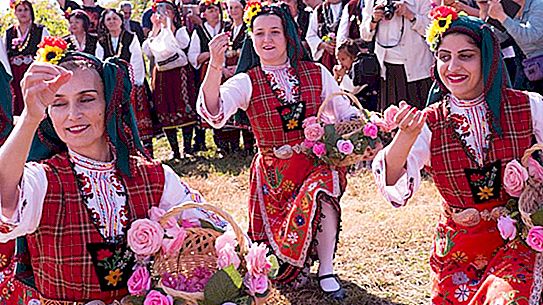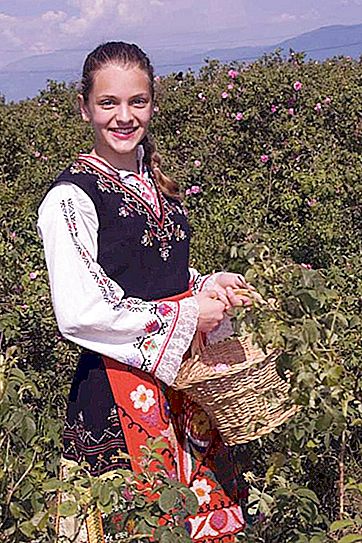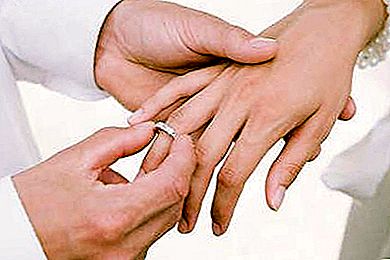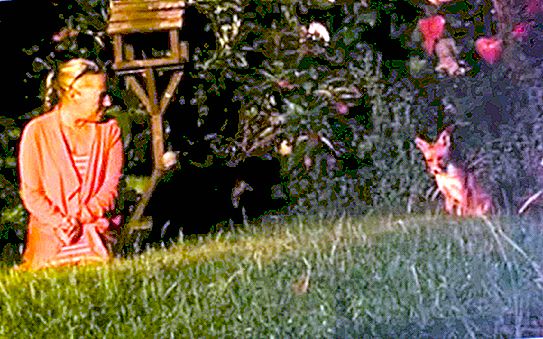The national Bulgarian costume, the photo of which is presented in the article, is one of the most typical elements of Bulgarian folk culture. This is a traditional clothing that is of particular importance in both everyday and holiday life of Bulgarians. Each region of Bulgaria has its own costume with unique, typical motifs.
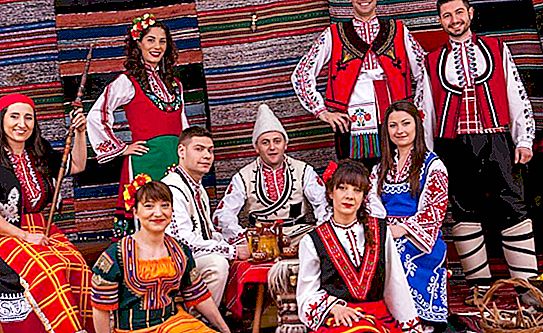
general characteristics
A certain code is woven into the decoration of the Bulgarian costume - in the past, the Bulgarians used it to obtain information about the families of those who wore clothes, and the region of the country where they lived. Each costume contained its message.
The Bulgarian costume consists of many elements and motifs, whose roots go back to pagan beliefs and legends. So, no one wore clothes with completely symmetrical decorations, because the Bulgarians believed that complete symmetry was a diabolical creation. Consequently, elements were often added and removed. This was considered a deliberate mistake in order to prevent the evil eye.
Suit with two aprons
Different types of women's national Bulgarian costume can be distinguished by style. These characteristics vary between geographical areas and depend on specific historical circumstances.
The main items of one of the types of clothing are: a shirt, two aprons fixed to the waist (one in front, the other in the back), and a belt. Beautiful embroidery decorates most of the sleeves, front and back of the shirt.
Two aprons are made of home-made decorative fabric: the back part is covered with folds and assemblies, the front one consists of one or two parts with horizontal or vertical embroidery. The rear apron exists in several versions (volnenik, cowberry, tukmenik, pestemal, chicken tree, curtain), characteristic of individual geographical areas. The belt is a long piece of fabric wrapped several times around the waist.
Initially, this ancient Bulgarian national costume was distributed in all Bulgarian lands, but in later times it was mainly preserved in the Danube plain.
Dresses
Sukman dress was the most widespread type of women's national clothing. However, its many regional varieties have some common characteristics: fabric type, tunic-like incision and décolleté. Sukman is most often a sleeveless dress, although in some places it has short or long sleeves. As a rule, strips of dress fabric are attached to the armhole of the sleeve and the so-called “tails” are formed, reduced decorative elements of the former sleeves that have lost their utilitarian function.
The decoration of this Bulgarian national costume is concentrated on the skirt, neck and sleeves. It consists of multi-color embroidery, decorative fabric and appliques of braids, various in size and style.
The main three varieties of sukman dresses are:
- Kasoclin with low wedges typical of Western Bulgaria;
- high wedges with high wedges typical of Central Bulgaria;
- a rare two-component sukman with a short jacket, a cap, a tight-fitting skirt and a long belt, typical of some eastern regions.
The sukman dress is worn with a short, woven ribbon fastened in front with a buckle.
The Saya dress as part of the Bulgarian national costume includes a tunic shirt as the main component, which is always worn as outerwear. The length of the skirt varies (may be up to the knee or ankle joint), the sleeves are short or long. The material for the dress is in different colors. The predominant are plain white, black, blue dresses made of cotton or wool.
Another important element is a black or red woolen belt. The apron is also woolen, most often red, striped or with several woven ornaments (in some southwestern regions). An apron decorated with gold threads, which is used mainly in festive celebrations, became more popular later. It should be noted that the Bulgarian national costume for the girl as a whole repeats clothing for adults.
In general, this type of dress is most common in the southern and southwestern parts of the country.
One apron suit
This type of Bulgarian national costume is typical of some places on the Danube plain and in the Rhodope Mountains. It consists of fewer items:
- long tunic shirt;
- an apron tied on a belt (narrow, from one subject, or wider from two parts) with a rather simple ornament.
Until the first quarter of the 20th century, this was mainly typical of Bulgarian Muslim women in the Rhodope Mountains, as it was practical and met the requirements of their daily activities. At the same time, there was a certain desire to make the costume richer, to add more items to it. Thus, outdoor outdoor clothing (a kind of caftan) was introduced as part of this dress. Characteristic of women in the Rhodope region were their preferences for light yellow and orange, as well as green shades of grass, combined into an apron texture.
Clothes for men

National Bulgarian men's suits include two main styles: white-leaved (mainly white clothing) and black-leaved (mainly black), depending on the color of the outerwear. These two patterns are not geographic-based varieties, but rather two successive stages in the development of a male suit.
It is assumed that the earliest prototype consisted of a long shirt with skirts falling over white woolen or cotton pants tied with a belt. This conservative style has been preserved for a long time, because it was suitable for the most common work in agriculture and livestock.

